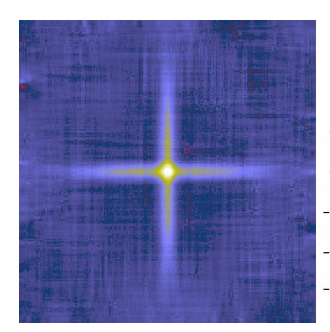| Authors: | E. Deriaz, J.-L. Starck, S.Pires |
| Journal: | A&A |
| Year: | 2012 |
| Download: | ADS | arXiv |
Abstract
To derive the convergence field from the gravitational shear (gamma) of the background galaxy images, the classical methods require a convolution of the shear to be performed over the entire sky, usually expressed thanks to the Fast Fourier transform (FFT). However, it is not optimal for an imperfect geometry survey. Furthermore, FFT implicitly uses periodic conditions that introduce errors to the reconstruction. A method has been proposed that relies on computation of an intermediate field u that combines the derivatives of gamma and on convolution with a Green kernel. In this paper, we study the wavelet Helmholtz decomposition as a new approach to reconstructing the dark matter mass map. We show that a link exists between the Helmholtz decomposition and the E/B mode separation. We introduce a new wavelet construction, that has a property that gives us more flexibility in handling the border problem, and we propose a new method of reconstructing the dark matter mass map in the wavelet space. A set of experiments based on noise-free images illustrates that this Wavelet Helmholtz decomposition reconstructs the borders better than all other existing methods.

